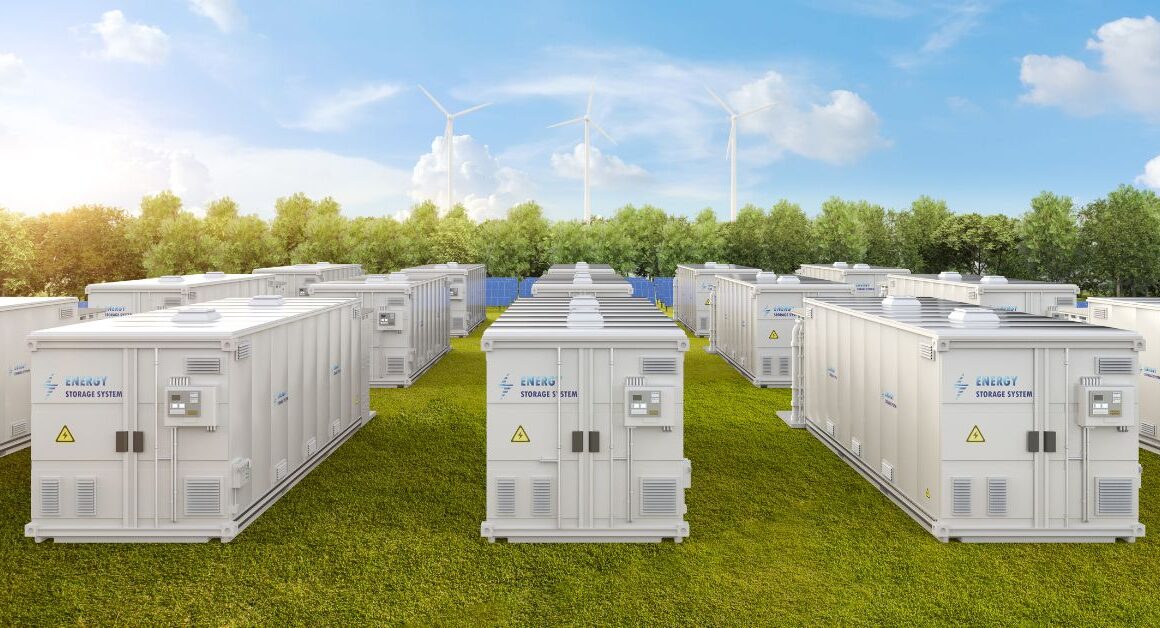The Interdependency of Renewable Energy and Energy Storage: A Symbiotic Relationship for a Sustainable Future
Integrating energy from renewable sources using energy storage solutions is essential for transitioning to a sustainable, low-carbon future. These two technologies are closely interdependent, each playing a crucial role in supporting the other’s development and effectiveness.
This chapter will delve deeper into the symbiotic relationship between energy obtained from renewable sources and energy storage systems, highlighting how they complement and depend on each other to achieve a greener, cleaner future.
Overcoming the Intermittency Challenge
Renewable energy sources, such as solar and wind power, are inherently intermittent due to the variability of weather conditions. Energy storage systems provide a means to overcome this challenge by storing excess energy generated during periods of high production, which can then be released during periods of low production or high demand. By bridging the gap between supply and demand, energy storage systems enable the consistent and reliable delivery of renewable energy, making it more viable as a primary source of electricity.
Enhancing Grid Stability and Resilience
Maintaining grid stability becomes increasingly critical as renewable energy sources become a significant part of the energy mix. Energy storage systems can help balance the grid by absorbing excess production during high renewable energy generation periods and releasing it when needed. This flexibility in managing energy flows improves grid stability and enhances its resilience to fluctuations and outages.
Optimizing Renewable Energy Generation
Energy storage systems can optimize the output of renewable energy installations. These systems can help renewable energy generators operate efficiently by storing excess energy during peak production times. Additionally, energy storage systems can smooth the output of renewable energy sources, reducing the variability of their generation and making them more predictable and controllable.
Unlocking New Business Models and Revenue Streams
The interdependency of renewable energy and energy storage creates opportunities for innovative business models and revenue streams. For instance, energy storage systems can enable demand response programs, where customers can choose to consume stored renewable energy during peak demand periods in exchange for lower electricity rates. Additionally, energy storage can facilitate the development of virtual power plants, which aggregate distributed energy resources, such as solar panels and batteries, to provide power to the grid in a coordinated manner.
Facilitating the Decarbonization of Transportation
The electrification of transportation is a vital component of reducing greenhouse gas emissions and combating climate change. Renewable energy and energy storage systems are also interdependent in this context. Electric vehicles (EVs) require clean energy sources to charge their batteries. In contrast, energy storage systems can help manage the increased demand for electricity that comes with the widespread adoption of EVs. By working together, renewable energy and energy storage can support the growth of the EV market and accelerate the transition to sustainable transportation.
The interdependency between renewable energy and energy storage proves the symbiotic relationship these two solutions share in pursuing a sustainable energy future. By addressing intermittency challenges, enhancing grid stability, optimizing renewable energy generation, unlocking new business models, and facilitating the decarbonization of transportation, renewable energy and energy storage systems work hand-in-hand to create a cleaner, greener world.
As we continue to develop and invest in these technologies, their collaborative potential will be crucial in shaping our path toward a more sustainable and eco-friendly future.



